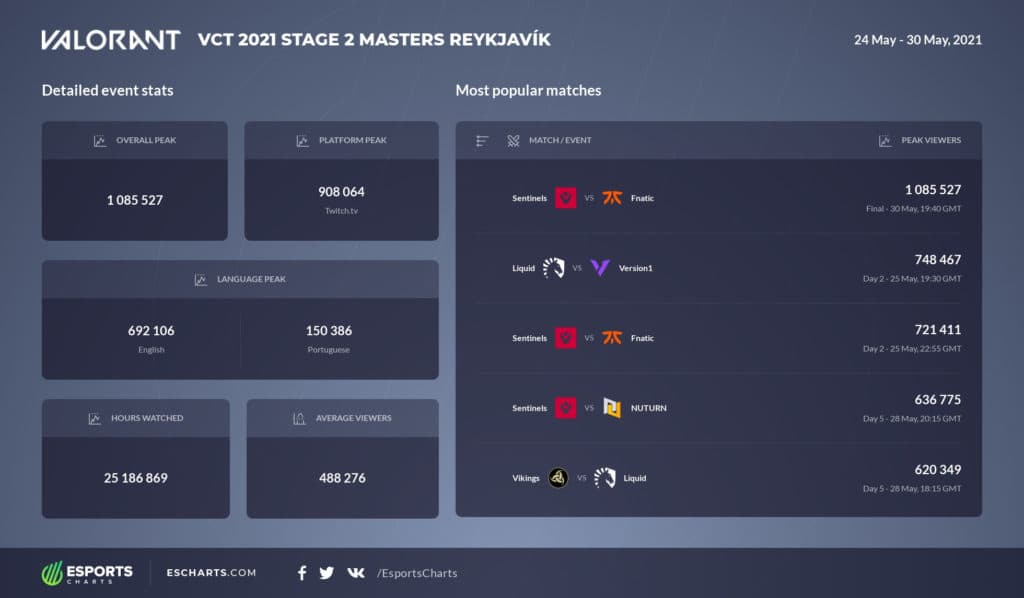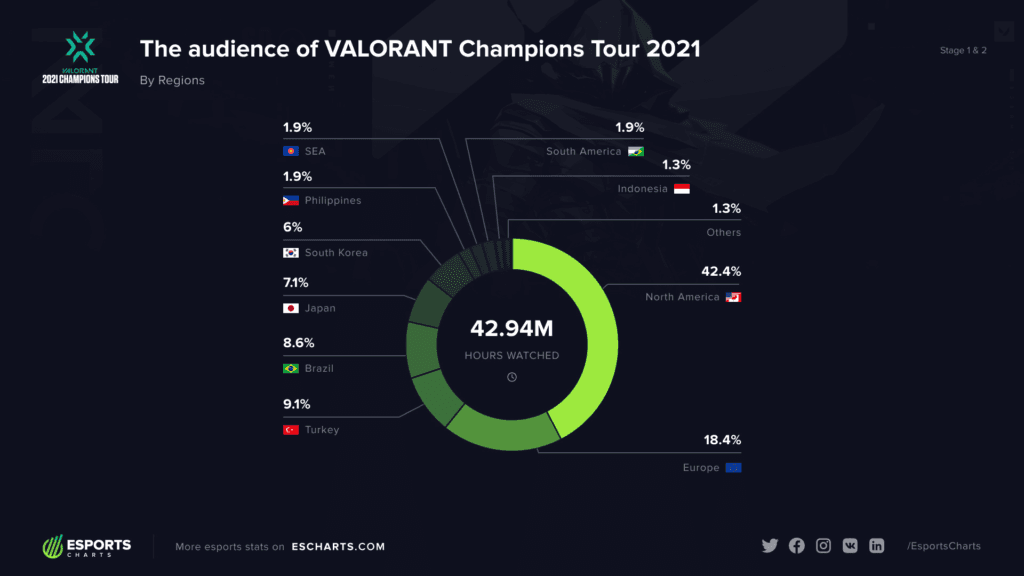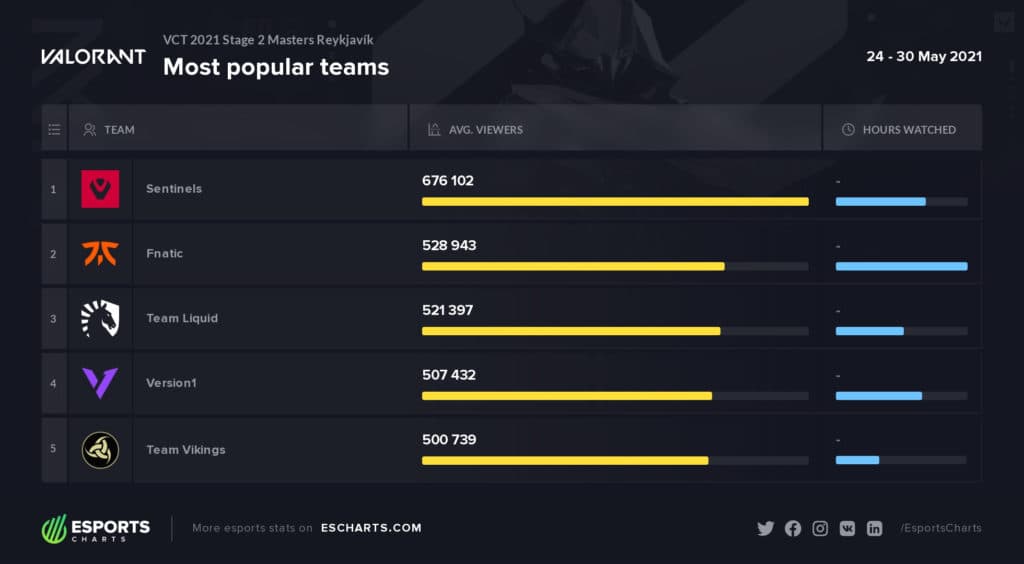While a number of factors meant the tournament was always going to do well, these numbers are massive. What do they mean for the game’s future, and can VALORANT keep it up?
As the first ever LAN event for what might be the fastest-growing esport around, VALORANT Masters Reykjavik was always going to do well in the views department. However, even with these expectations, the grand total still impresses. The grand finals between Sentinels and Fnatic peaked at just over 1 million viewers, while the tournament as a whole averaged slightly below 500,000 viewers.

As is often the case with big tournaments, early and later games have the largest viewership, while mid-event games is where the drop happens. The trend holds true here, with Team Liquid and Sentinels’ opening games taking the second and third place spots behind the grand final.
Viewership continues to impress in Japan and Turkey
VALORANT has captured a big audience in less obvious markets. The game has taken off in places like Japan and Turkey. With a Japanese team, Crazy Raccoon, attending the event, viewership hit 140,000 from that region. The co-stream of Yuti “StylishNoob” Seki was the main source of this, dwarfing the official Japanese cast.
VALORANT viewership in Turkey has always been driven by the popularity of BBL Esports, owned by streamer Ferit “wtcN” Karakaya. In an article released before VALORANT Masters took place, it was revealed that Turkey was the third-largest audience for the VALORANT Championship Tour, behind only Europe and North America, and that BBL were a top 5 team in terms of viewership.
One can only imagine what impact we’ll see once a Turkish team plays on the international stage. They’ll have a good shot at the next international Masters event, as four slots will be awarded to EMEA teams. Turkey would have been represented by Oxygen Esports if this format was used for Reykjavik.

These regions also show just how important co-streams have become to VALORANT's viewership, and how well the game has implemented them. Michael "Shroud" Grzesiek's co-streams consistently led the official English stream in viewership. Meanwhile, StylishNoob and wtcN have helped their regions take off like almost never before. Regions like Brazil still don't allow them; it might be time to reverse that decision.
Sentinels pull in nearly 150,000 more average viewers than second-place Fnatic
Coming back to the big event itself, champions Sentinels were unsurprisingly the team that did the best for viewership. Being led by household names such as Tyson “TenZ” Ngo and taking home North America an international esports title, it’s no surprise to see them so high on this list. With a gap of nearly 150,000 average viewers between them and second-place Fnatic, they’re clearly the team the world is most interested in.
With Fnatic taking second, Team Liquid, led by a superstar of their own, Adil “ScreaM” Benrlitom, take third. North American second seed Version1 is fourth, while in fifth we see our first non-NA or EU team, Brazil’s Vikings.

What do the VALORANT Masters statistics mean for the game's future?
The main question now seems to be whether VALORANT can hold and grow from this level of viewership. While 1 million peak is an incredible number, it’s also boosted by a number of factors. This was our first time ever seeing different regions on a global scale face each other.
The massively popular North American lineup Sentinels came in as a real threat to win, and left as the champions. And it was a rare LAN event during this time of online esports. Theoretically, viewership should only grow, but we’ll never see this combination of circumstances again.
This means, in terms of viewership, all eyes are on Berlin. If VALORANT Masters there can match the viewership that Reykjavik had, it means people are tuning in because they enjoy the game competitively. And if viewership DOES grow, it means VALORANT is easily on track to become one of the world’s biggest esports.